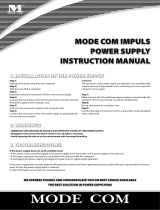
vi PIXIS System Manual Version 2.C
Figure 23. WinX Detector Temperature dialog .............................................................. 57
Figure 24. Array Terms for a CCD with a Dual Output Amplifier ................................ 59
Figure 25. Full Frame at Full Resolution ......................................................................... 60
Figure 26. 2 × 2 Binning .................................................................................................. 61
Figure 27. Binning and Array Orientation ....................................................................... 63
Figure 28. Free Run {No Response} Timing Chart, part of the chart in Figure 36 ......... 69
Figure 29. Free Run {No Response} Timing Diagram.................................................... 69
Figure 30. Chart Showing Two External Sync Timing Options ...................................... 70
Figure 31. Timing Diagram for External Sync Mode (+ edge trigger) ............................ 71
Figure 32. Continuous Cleans {Clean Until Trigger} Flowchart .................................... 72
Figure 33. WinX Continuous Cleans Timing Diagram ................................................... 73
Figure 34. LightField Clean Until Trigger (CUT) Timing Diagram ............................... 73
Figure 35. Rear of PIXIS Camera .................................................................................... 73
Figure 36. Chart of Safe and Fast Mode Operation ......................................................... 75
Figure 37. Comparison of NOT SCAN {Not Reading Out}, SHUTTER {Shutter
Open}, and NOT READY {Busy} Logic Output Levels .............................. 76
Figure 38. Kinetics Readout ............................................................................................ 77
Figure 39. Hardware Setup dialog ................................................................................... 78
Figure 40. Experiment Setup dialog ................................................................................ 78
Figure 41. Sensor Readout expander: Kinetics Readout Mode ...................................... 78
Figure 42. Shutter and Trigger expanders: No Response ............................................... 78
Figure 43. Free Run Timing Diagram.............................................................................. 79
Figure 44. Single Trigger Timing Diagram ..................................................................... 79
Figure 45. Multiple Trigger Timing Diagram.................................................................. 80
Figure 46. WinX: Custom Chip tab ................................................................................. 81
Figure 47. LightField: Custom Sensor pane .................................................................... 81
Figure 48. LightField: Custom Timing ............................................................................ 82
Figure 49. WinX: Vertical Shift ...................................................................................... 82
Figure 50. Acquisition Display ........................................................................................ 84
Figure 51. Camera1 in Camera Name Field .................................................................... 85
Figure 52. Data Overrun Due to Hardware Conflict dialog ............................................. 88
Figure 53. Devices Missing dialog .................................................................................. 89
Figure 54. Occupied Device icon .................................................................................... 90
Figure 55. Error Creating Controller dialog .................................................................... 90
Figure 56. Program Error dialog ...................................................................................... 91
Figure 57. Serial Violations Have Occurred dialog ......................................................... 92
Figure 58. Adjustable C-Mount: Internal Shutter (Air-cooled) ....................................... 97
Figure 59. Fixed C-Mount: Internal Shutter (Air-cooled) ............................................... 98
Figure 60. Adjustable C-Mount: Internal Shutter (Liquid-cooled) .................................. 99
Figure 61. Fixed C-Mount: Internal Shutter (Liquid-cooled) ........................................ 100
Figure 62. F-Mount: Internal Shutter (Air-cooled) ........................................................ 101
Figure 63. F-Mount: Internal Shutter (Liquid-cooled) .................................................. 102
Figure 64. F-Mount: 2048x2048, Internal Shutter (Air-cooled) .................................... 103
Figure 65. F-Mount: 2048x2048, Internal Shutter (Liquid-cooled) ............................... 104
Figure 66. Spectroscopy-Mount: No Internal Shutter, 3.60 bolt circle (Air-cooled) ..... 105
Figure 67. Spectroscopy-Mount: No Internal Shutter, 3.60 bolt circle (Liquid-cooled) 106
Figure 68. Spectroscopy-Mount: Internal Shutter (3.60" and 3.88" bolt circles)
(Air-cooled) ................................................................................................ 107
Figure 69. CoolCUBE
II
Circulator ................................................................................. 108
Figure 70. F-mount Adjustment ..................................................................................... 110


























